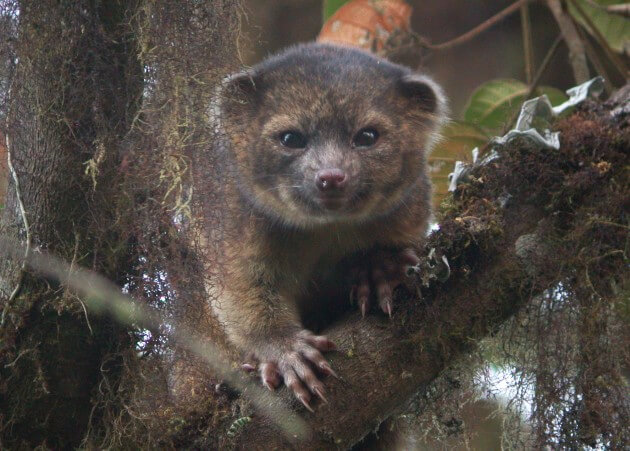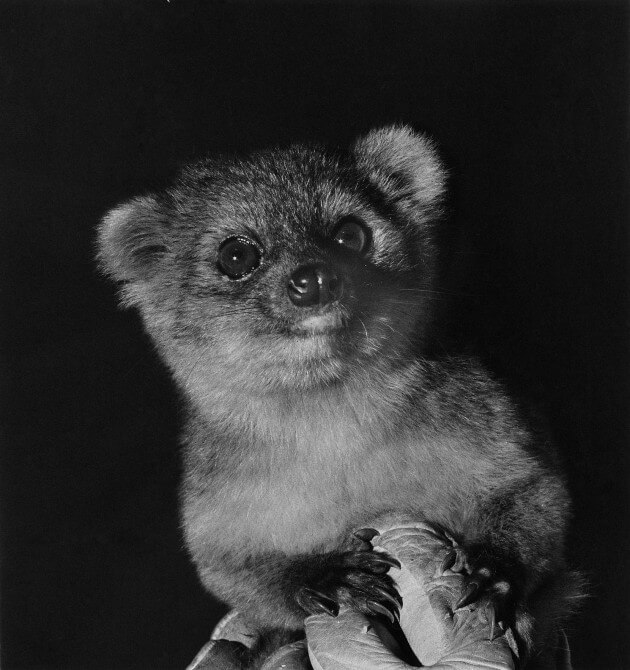This is the first discovery of its kind in over three decades * The researcher who discovered the new animal says that he hopes that the magnificent animal will serve as an ambassador for the preservation of the cloud forests of the Andes

It has been observed in the wild, relegated to the margins of museum collections and even exhibited in zoos around the world - but its details were mistakenly identified as part of a population of another species for over 100 years. A team of scientists from the Smithsonian Institution, revealed the stuffed animals of this impressive animal in the Natural History Museum in Chicago, genetic laboratories in Washington, D.C., and the preparation of South America. The result is the identification of the olinguito, or in its scientific name Bassaricyon neblina is the first species of carnivore discovered in the Americas in 35 years. The team published the discovery in the August 15 issue of the journal ZooKeys.
The Olingito looks like a cross between a domestic cat and a bear cub. It is actually the last recorded member of the Procyonidae family which includes the raccoons (raccoons), the coatis, the kinkajous and the Olingus. The Olingito, which weighs about one kilogram, with big eyes and orange-brown fur, lives in the cloud forest in Colombia and Ecuador, as its scientific name suggests - nebulina means fog in Spanish. In addition to being the last species of its family to be described, a special feature of the Olongito is that it is a carnivore, a particularly rare discovery in the 21st century.
"The discovery of the Olingito shows us that the world has not yet been fully explored, and there are still fundamental secrets that need to be discovered," says Christopher Helgen, Curator of Mammals at the National Museum of Natural History in Washington, one of the institutions of the Smithsonian Institution. "If we find more types of predators, what surprises await us? Documenting the species that are still unknown to science is the first step towards understanding the full richness of the diversity of life on Earth."
Discovering a new species of predator doesn't happen every day. It took decades to complete the comprehensive study of Olingus - several species of tree-dwelling carnivores in the genus Bassaricyon. The Helgen team wanted to understand the characteristics of the Olingo species, and their lifestyles. Unexpectedly, after the team members examined the genetic makeup of 95% of the olingo fossils in museums, and performed tests in the field, they uncovered the olingito, which had not previously been described as an independent species.
The Olingito differed from the Olingo in the shape of the teeth and the skeleton, which were smaller than those of the Olingo. Examining the skins of the animals in museums revealed that the new species was the smallest of the Olingo species and had the densest fur. Field monitoring showed that the creature lives in unique areas of the northern Andes at an altitude of between 5,000 and 9,000 feet (1,500-3,000 meters) above sea level, higher than all known species of the Olingo. This information came from a revision of the Olingito details collected at the beginning of the 20th century. The researchers sought to answer the following question - does the Olingito still exist in nature. To do this, they turned to Roland Case, director of the Earth's Species Diversity Laboratory at the North Carolina Museum of Natural History, and he helped them organize a research expedition.
The data about the individuals in the museums gave us an idea of where to look, but it still seems like a shot in the dark," says Case. "But the Andean forest is so impressive that even if we didn't find the animal we were looking for we would still discover interesting things along the way."
The first photo of the new animal was a relatively blurry photo by Miguel Pinto, a zoologist from Ecuador, with the help of these photos taken from a camera that was placed in the field for several days, they discovered the Olingito in a forest on the western slopes of the Andes, and they spent three weeks documenting everything they could about the creature - its features And the forest where Hor lives. They learned that the olingito is active mainly at night, it feeds most of the time on fruits, comes down from the trees only rarely and each couple gives birth to one baby at a time.

The researchers estimate that 42% of the living environment of the Olingito - the cloud forest in the Andes, has already disappeared from the surface of the earth and turned into agricultural land and urban areas. "The cloud forest of the Andes is a world in itself, full of many species that are not found anywhere else, and many of them are on the verge of extinction," says Helgan. "We hope that the Olingito can serve as an ambassador for the cloud forests of Ecuador and Colombia and bring global attention to this habitat.
Even if the Olingito is new to science, it is not alien to humans. People have lived in the vicinity of the cloud forests for thousands of years and although it has been misclassified as an olingo, it has been exhibited in museums for over 100 years and at least one olingito from Colombia was exhibited in several US zoos in the 1920s and XNUMXs. There were several cases in which the ulingito was almost discovered. In XNUMX there was a zoologist in New York who noticed the uniqueness of the Olingito and believed that it was a new species, but he did not publish the discovery.
Giving olingito a separate scientific name is just the beginning, Helgen says. "Given that the species exists in nature and was given a name, everything just begins from here. This is a beautiful animal, but we know very little about it, in how many countries does it live, what else can be learned about its behavior? What do we need to ensure its preservation?"
For information on the Smithsonian Institution website
- At least a third of the marine species have yet to be identified
- Biodiversity is dwindling
- Researchers at the University of Haifa have discovered a new species of spider
- A new biological species is born
- Researchers went underground to identify 850 new species
